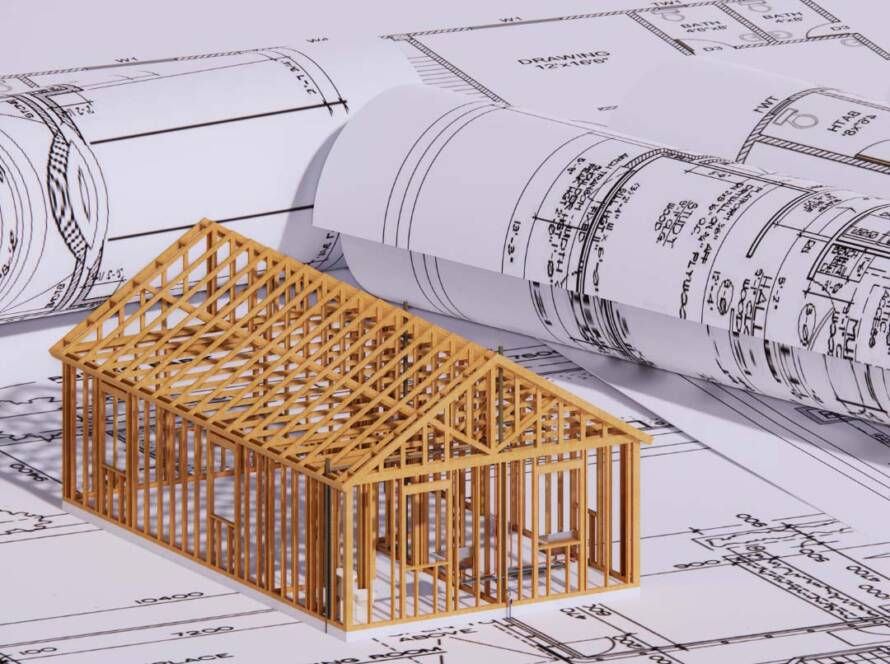Introduction
BIM technology is not limited to large-scale architectural units it is beneficial for small and medium-scale businesses as well. SMEs cannot run their business smoothly without the application of BIM technology in the domain of architecture.
Building Information Modeling (BIM) adoption within Small and Medium Enterprises (SMEs) in the construction and architecture industry can be influenced by various factors.
While larger firms may have more resources to invest in technology, SMEs can still benefit from BIM implementation. You need to be well aware of it while meeting your requirements with complete ease.
What Is BIM?
Building Information Modeling (BIM) is an online & graphical representation of the functional and Physical features of a building or infrastructure. It involves creating and managing a comprehensive, three-dimensional model that incorporates various aspects of a construction project throughout its lifecycle.
Reasons For Consideration Of BIM Adoption Within SMEs
Today, SMEs also make use of BIM technologies in their engineering services. You need to be well aware of it while attaining your requirements. There are certain considerations behind the adoption of BIM Technologies for SMEs.
1. Cost & Resources
Explore affordable BIM solutions designed for SMEs. Cloud-based BIM tools can reduce the need for expensive hardware, and training programs can be tailored to fit budget constraints. SMEs often have limited financial resources and may find it challenging to invest in BIM software, training, and hardware.
2. Training & Skill Development
Provide training programs for existing staff or consider hiring individuals with BIM expertise. Online courses and certifications can be a cost-effective way to upskill employees. SMEs may lack staff with the necessary BIM skills and knowledge.
3. Integration With Existing Work Flows
Gradually phase in BIM processes, allowing employees to adapt. Choose BIM software that is compatible with existing tools to ease the integration process. Integrating BIM into existing workflows can be disruptive.
4. Project Size & Complexity
Highlight the benefits of BIM, such as improved collaboration, reduced errors, and enhanced project efficiency, which can be valuable regardless of project size. SMEs may be involved in smaller projects where BIM adoption might seem unnecessary.
5. Client Requirements
Educate clients about the advantages of BIM, including cost savings, improved project visualization, and better decision-making. This may encourage clients to request or even mandate BIM in projects. Clients may not explicitly demand BIM from SMEs.
6. Collaboration & Communication
Implement collaboration tools and practices that facilitate communication among team members, stakeholders, and other project participants. Foster a collaborative culture within the organization. Effective collaboration is crucial in BIM, and SMEs may face communication barriers.
7. Regulatory Compliance
Stay informed about BIM standards and regulations in your region. Ensure that your BIM processes align with industry standards to meet regulatory requirements. Compliance with BIM standards and regulations can be demanding.
8. Return On Investment
Demonstrate the long-term benefits of BIM, including time and cost savings, reduced rework, and improved project outcomes. Track and communicate success stories and key performance indicators (KPIs) to showcase the positive impact of BIM. SMEs may be concerned about the tangible benefits and ROI of BIM adoption.
Final Take Away
Hence, these are some of the core factors that you need to take care of if you want to grow your small-scale business in the right direction. Once you follow the correct process, things can become easier for you to make the perfect use of BIM technology.
You can share your views and comments in our comment box. It will help us to know your approach to this matter. Try to follow the process that can ensure better returns from your investments.
By addressing these considerations and challenges, SMEs can gradually adopt BIM and harness its potential to enhance collaboration, improve project efficiency, and stay competitive in the construction industry.





